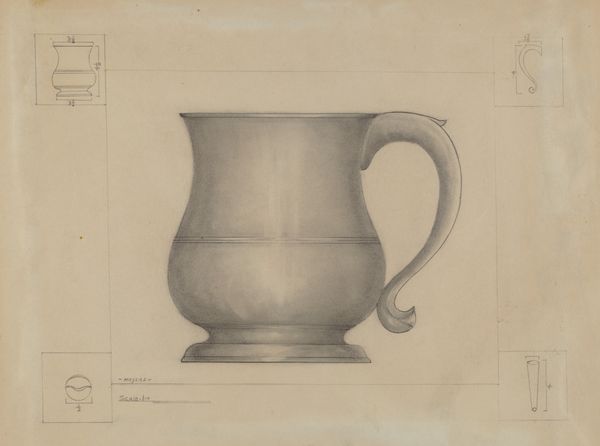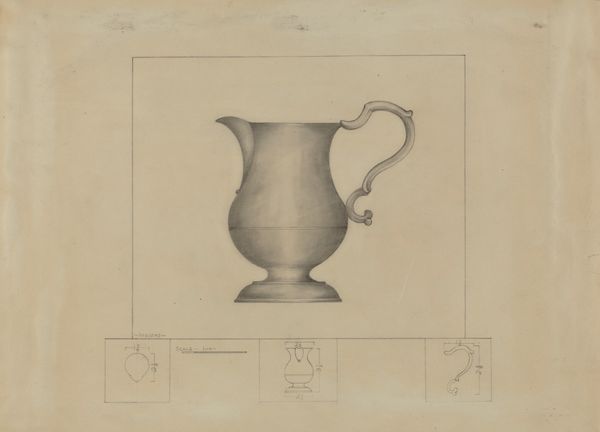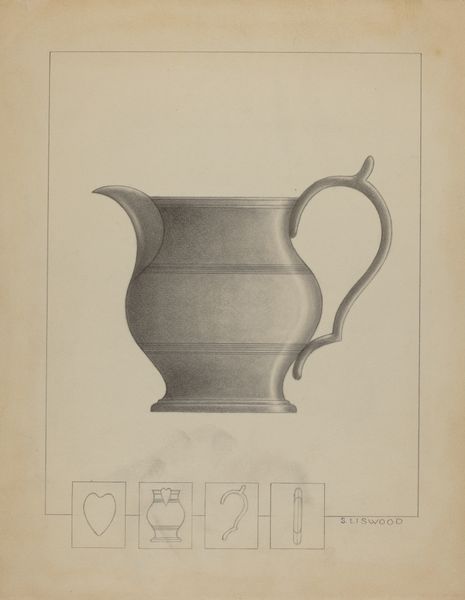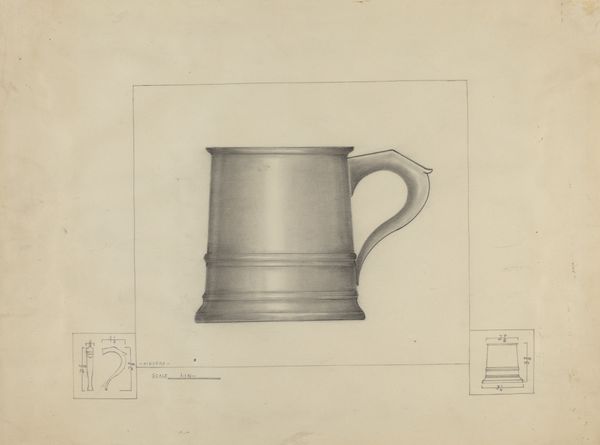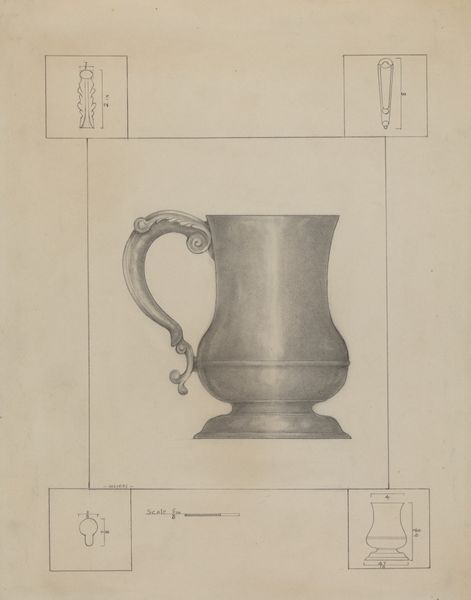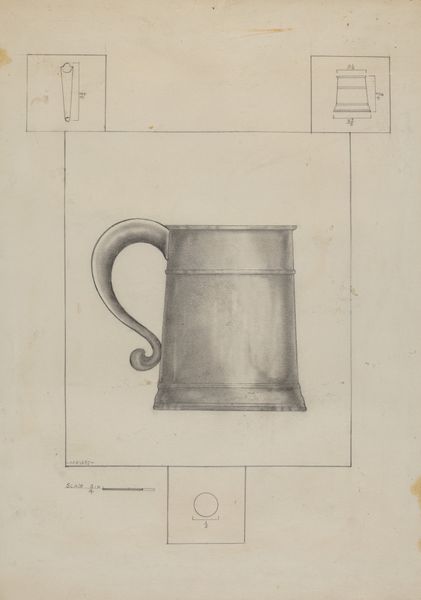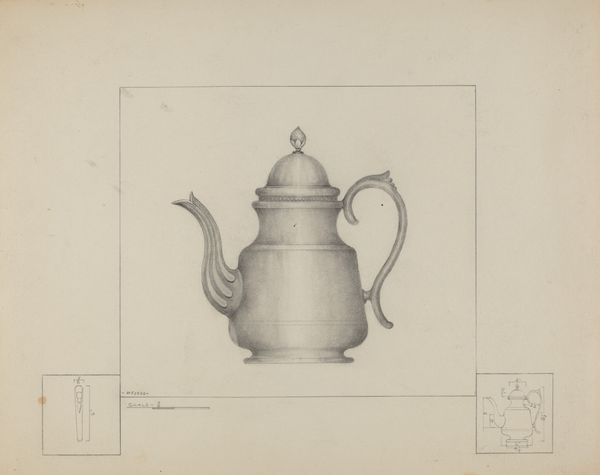
drawing, pencil
#
drawing
#
pencil drawing
#
geometric
#
pencil
#
academic-art
#
realism
Dimensions: overall: 22.8 x 28.9 cm (9 x 11 3/8 in.)
Copyright: National Gallery of Art: CC0 1.0
Editor: This pencil drawing from around 1936, titled "Pewter Pitcher" by Henry Meyers, seems like a study, almost technical, with its extra sketches and measurements around the central pitcher. What catches your eye? Curator: What interests me immediately is the conscious depiction of materiality. Meyers isn’t just rendering form, but engaging with the *idea* of pewter. Note the subtleties in the shading – the implied texture suggesting a polished, perhaps even industrially produced surface. Editor: I hadn't thought of it like that. More than just an aesthetic representation. Curator: Exactly! Consider the economic context. Pewter, by the 1930s, had moved from artisanal craft to mass production. This drawing highlights that shift by presenting it so plainly. The surrounding sketches emphasize the act of measuring, of standardizing. This makes me wonder about Meyers' intention: was it to simply reproduce an object, or to subtly examine the effects of industry on craft? What purpose does this meticulous process fulfill? Editor: It really does seem to remove any hint of the personal or expressive touch of the artist. Everything's very precise. Curator: Precisely! This brings to the forefront the labour involved, stripping away any romantic notion of artistic inspiration and placing it within a framework of industrial accuracy and the value of replication. Editor: I see what you mean. It is more than just a pitcher, it's a document of a moment in manufacturing history! I hadn’t picked up on those aspects initially. Thanks! Curator: Indeed! This dialogue makes me curious about what other commonplace objects were seen and reinterpreted during that era of unprecedented change and transformation.
Comments
No comments
Be the first to comment and join the conversation on the ultimate creative platform.
